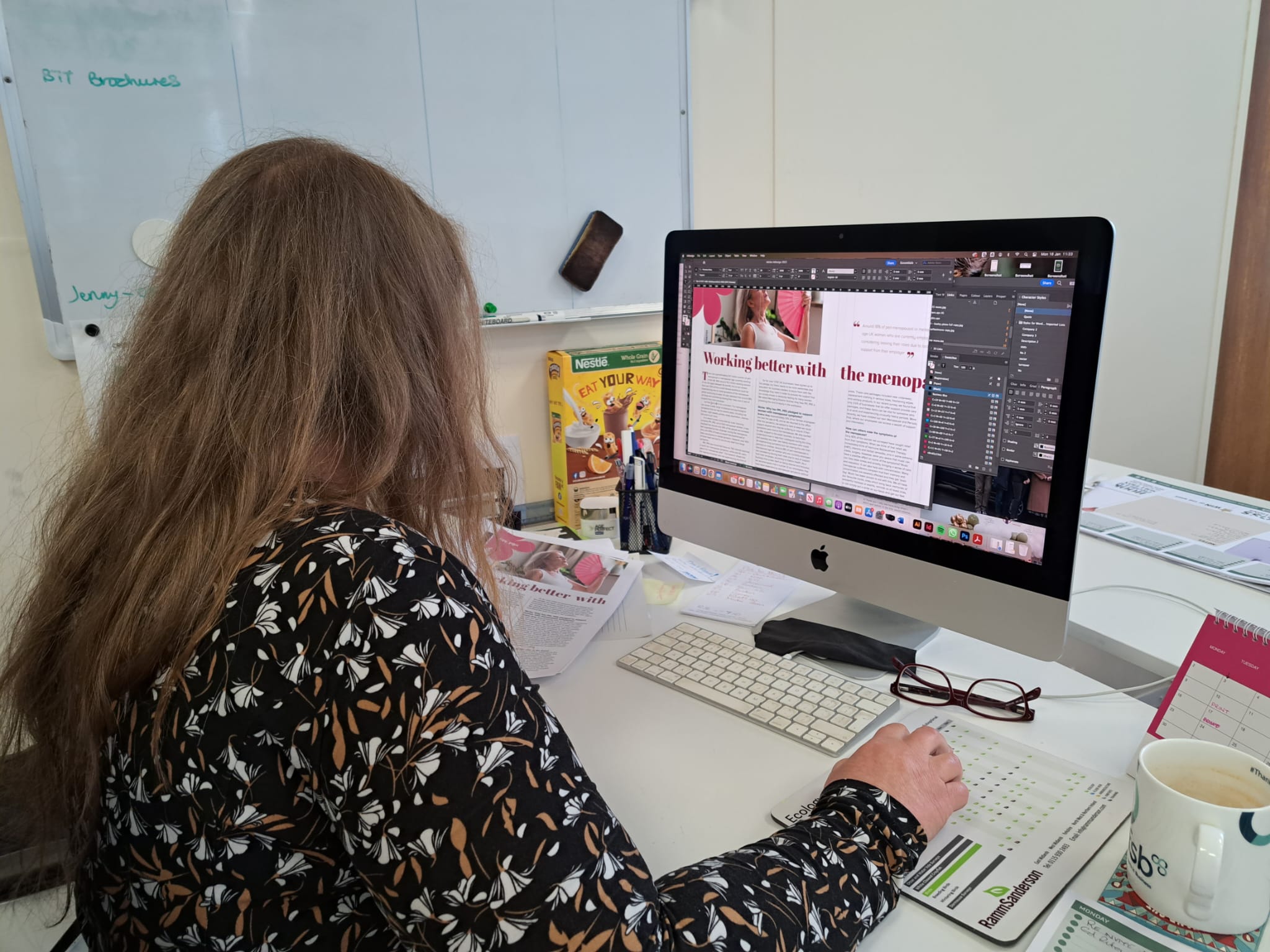How graphic design influences buying decisions
There’s a certain psychology to how graphic design influences buying decisions. When design is done right, it can leave a lasting legacy.
Designers don’t just create logos. Social media graphics, magazine adverts, letterheads, even internal reports to demonstrate progress will include some form of design work in them. That’s why design is such an important component of any organisation.
Design should be considered throughout any marketing strategy as many aspects of it will inevitably come down to design.
Where graphic design comes into play
Graphic design influences buying decisions in a variety of ways. From playing a major role in building the reputation and personality of a brand, through to the way you want users to navigate your website, a designer should be on hand to enhance the following areas of a business:
First impressions:
Graphic design creates the first impression of a brand or product. A visually appealing design can capture the attention of potential customers and make them more likely to explore further.
Brand identity:
A consistent and well-designed graphic identity helps build brand recognition. When buyers can easily identify a brand through its logo, colours, and other design elements, they are more likely to trust and choose that brand.
Emotional connection:
Graphic design can evoke emotions and feelings. For example, certain colours and images can make a product seem more exciting, luxurious, or trustworthy. This emotional connection can drive buying behaviour.
Information clarity:
Effective graphic design communicates information clearly and concisely. It helps organise and present information in a way that is easy to understand, which can be especially important for complex products or services.
Perceived value:
The perceived value of a product can be influenced by its packaging and presentation. High-quality, professional design can make a product seem more valuable and justify a higher price point.
Promotions and advertising:
Graphic design is a key component of advertising and promotions. An eye-catching design can make an ad or promotion stand out and encourage buyers to take action, such as making a purchase or signing up for a service.
User experience:
In the case of digital products and services, graphic design is essential for creating a positive user experience. Well-designed interfaces and navigation can make it easier for customers to find what they need and complete a purchase.
Social media presence:
In today’s digital age, a strong social media presence is crucial for businesses. Graphic design helps create visually appealing social media posts that can engage followers and drive traffic to a website or online store.
The psychology behind graphic design
Most likely, you yourself have been drawn in by the lure of appealing design.
Whether it was when choosing between jars of pasta sauce at the supermarket (packaging design at play here); following a link in a newsletter (marketing and advertising design); reading an article in a magazine (publication design), or returning to your favourite café to work remotely (environmental design), you’ve no doubt been influenced by graphic design yourself.
Here are a few reasons why design has a psychological impact.
Hierarchy and balance:
Our brains like order and organisation. By using hierarchy in design, where some elements are more prominent than others, designers can guide the viewer’s attention and help them understand the message more easily. Balance, whether symmetrical or asymmetrical, also contributes to a design’s visual appeal.
Gestalt principles:
These are a set of principles that describe how our brains tend to organise visual elements into groups or unified wholes. For instance, we tend to see objects that are close together as being more related than objects that are farther apart. Graphic designers use these principles to create designs that are easy to understand and visually appealing.
Anchoring effect:
The first piece of information that we see often acts as an anchor and influences our perception of subsequent information. Designers can use this principle to their advantage by strategically placing certain elements or information in a design.
Colour psychology:
Different colours can evoke different emotions and associations. For example, red is often associated with excitement and urgency, while blue is associated with trust and calmness. Brands use colour psychology to create a desired emotional response from consumers.
Repetition and consistency:
Repetition helps reinforce a message or brand identity, while consistency creates a sense of familiarity and trust. This is why brands use consistent colours, fonts, and design elements across all their materials.
Simplicity and complexity:
The brain prefers simplicity and clarity over complexity and confusion. However, a certain level of complexity can create interest and engagement. Designers strive to strike a balance between simplicity and complexity to create designs that are clear and engaging.
Reciprocity:
When a brand provides value or a positive experience, consumers are more likely to feel a sense of reciprocity and be more inclined to purchase from or engage with the brand.
Storytelling:
Humans are wired to understand and connect with stories. Graphic design can be used to tell a story and create a narrative that resonates with consumers and helps them connect with a brand on a deeper level.
A designer’s process
Design and branding aren’t just about logos and colours, nor should a logo be something that’s knocked up in a couple of hours!
When asking your designer to come up with a concept, you must appreciate that the process will take time for these reasons:
1) You most likely aren’t their only client
2) They want to do your brand justice
3) Their work is their reputation
4) They care about what their designs will convey about your business
5) They want you to succeed with impactful, meaningful design
Designing any branding element should be a collaborative process that typically involves several steps:
Briefing
A designer must understand the brand’s vision, values, and goals. This is typically done through a briefing session where the graphic designer talks to the brand representatives to gather information about the company, its target audience, competitors, unique selling propositions, and any specific requirements or preferences for the logo.
Research
After the briefing, the designer conducts research to understand the industry, the brand’s position in the market, and its target audience. This may involve looking at competitors’ logos, understanding current design trends, and studying the brand’s buyer personas to understand their preferences and behaviours.
Conceptualisation:
Armed with information from the briefing and research, the designer starts brainstorming and sketching out ideas for the logo. This stage involves exploring different concepts, styles, colours, and fonts that align with the brand’s identity and message.
Designing:
Once a few concepts have been selected, the designer creates digital versions of the logo concepts using design software. This stage involves fine-tuning the details, colours, and typography to create polished and professional-looking designs.
Feedback and revisions:
The designer presents the logo concepts to the brand representatives for feedback. Based on the feedback, the designer makes revisions and refinements to the design until it meets the brand’s requirements and expectations. It’s important at this stage for the brand representatives to also take on board the designer’s expertise. They should be open minded and willing to compromise according to the designer’s advice in order to achieve the best results.
Conclusion
Graphic design is a powerful tool for influencing buyers by creating a strong first impression, building brand identity, evoking emotions, communicating information, enhancing perceived value, and improving user experience.
By understanding psychological principles, graphic designers can create designs that grab attention and resonate with consumers on a deeper level, ultimately influencing their buying behaviour.
Throughout the process, clear communication and collaboration between the designer and the brand are crucial. The designer needs to understand the brand’s vision and goals, while the brand needs to provide constructive feedback and guidance to help the designer create a logo that effectively represents the brand and resonates with its target audience.







